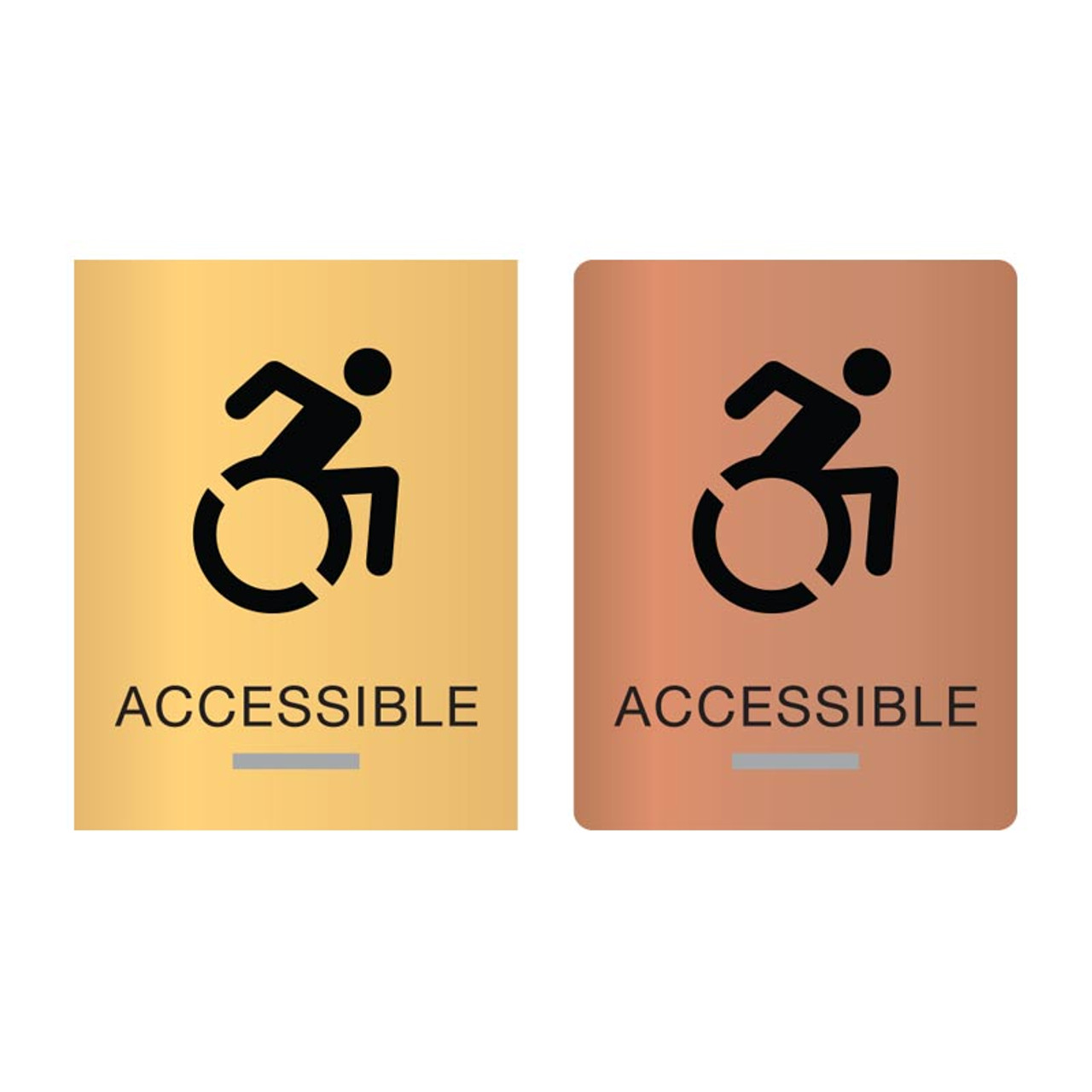The Duty of ADA Signs in Abiding By Ease Of Access Criteria
Wiki Article
Exploring the Secret Functions of ADA Indications for Improved Availability
In the world of access, ADA signs offer as silent yet effective allies, making sure that areas are accessible and inclusive for individuals with handicaps. By integrating Braille and responsive elements, these indicators break barriers for the aesthetically damaged, while high-contrast color schemes and readable typefaces cater to diverse visual needs.Significance of ADA Compliance
Ensuring conformity with the Americans with Disabilities Act (ADA) is vital for cultivating inclusivity and equivalent accessibility in public rooms and workplaces. The ADA, enacted in 1990, mandates that all public centers, companies, and transportation solutions suit people with handicaps, guaranteeing they delight in the same civil liberties and opportunities as others. Conformity with ADA standards not just fulfills legal obligations but likewise boosts an organization's credibility by showing its commitment to diversity and inclusivity.Among the essential elements of ADA compliance is the application of obtainable signs. ADA indicators are created to make certain that people with disabilities can easily navigate via structures and areas. These indicators should stick to certain standards concerning dimension, font, shade comparison, and placement to guarantee presence and readability for all. Appropriately carried out ADA signage helps get rid of barriers that individuals with specials needs frequently come across, therefore promoting their independence and self-confidence (ADA Signs).
Furthermore, sticking to ADA policies can reduce the danger of potential fines and legal repercussions. Organizations that stop working to adhere to ADA standards might face legal actions or fines, which can be both economically challenging and damaging to their public image. Thus, ADA compliance is indispensable to cultivating a fair environment for every person.
Braille and Tactile Components
The incorporation of Braille and tactile aspects right into ADA signs embodies the concepts of ease of access and inclusivity. It is typically placed underneath the matching message on signage to make certain that individuals can access the info without visual support.Responsive elements expand beyond Braille and include elevated personalities and symbols. These elements are developed to be noticeable by touch, allowing individuals to identify space numbers, washrooms, departures, and other vital areas. The ADA sets details guidelines pertaining to the size, spacing, and positioning of these tactile components to enhance readability and make certain uniformity throughout different environments.

High-Contrast Color Design
High-contrast color plans play a critical duty in enhancing the presence and readability of ADA signs for individuals with visual impairments. These systems weblink are crucial as they make the most of the distinction in light reflectance between text and history, making sure that indications are easily noticeable, even from a range. The Americans with Disabilities Act (ADA) mandates making use of specific shade contrasts to fit those with minimal vision, making it a crucial facet of compliance.The efficacy of high-contrast colors exists in their ability to stick out in various illumination problems, including dimly lit settings and areas with glow. Generally, dark text on a light background or light message on a dark background is used to achieve ideal comparison. As an example, black message on a white or yellow history provides a raw aesthetic difference that aids in quick acknowledgment and understanding.

Legible Fonts and Text Dimension
When considering the design of ADA signage, the option of clear font styles and ideal message dimension can not be overstated. These elements are essential for making certain that signs are easily accessible to people with aesthetic disabilities. The Americans with Disabilities Act (ADA) mandates that typefaces must be sans-serif and not italic, oblique, script, highly attractive, or of unusual type. These demands aid make certain that the message is conveniently legible from a distance which the personalities are distinct to varied target markets.According to ADA guidelines, the minimal text height must be 5/8 inch, and it ought to increase proportionally with checking out distance. Consistency in message dimension adds to a cohesive aesthetic experience, helping individuals in navigating settings effectively.
Moreover, spacing in between lines and letters is essential to clarity. Sufficient spacing protects against characters from showing up crowded, enhancing readability. By sticking to these requirements, designers can significantly enhance ease of access, making certain that signage serves its intended function for all people, no matter their aesthetic capabilities.
Reliable Placement Approaches
Strategic placement of ADA signage is essential for maximizing access and making sure conformity with legal requirements. ADA standards specify that indications ought to be mounted at a height in between click here to read 48 to 60 inches from the ground to guarantee they are within the line of view for both standing and seated individuals.Furthermore, signs have to be put adjacent to the lock side of doors to allow very easy identification prior to entrance. Consistency in indication positioning throughout a facility boosts predictability, reducing complication and enhancing general customer experience.

Final Thought
ADA indicators play a vital role in promoting ease of access by integrating functions that attend to the requirements of people with impairments. These elements collectively foster an inclusive environment, emphasizing the relevance of ADA conformity in ensuring equivalent accessibility for all.In the world of availability, ADA indicators serve as quiet yet effective allies, making sure that areas are navigable and inclusive for people with specials needs. The ADA, enacted in 1990, mandates that all public centers, employers, and transportation services accommodate individuals with disabilities, ensuring they delight in the same rights and possibilities as others. ADA Signs. ADA indicators are made to make sure that individuals with disabilities can conveniently navigate via buildings and rooms. ADA guidelines stipulate that indicators must be mounted at an elevation in between 48 to 60 inches from the ground to guarantee they are within the line of sight for both standing and seated people.ADA indications play an important duty in promoting availability by incorporating features that resolve the requirements of people with specials needs
Report this wiki page